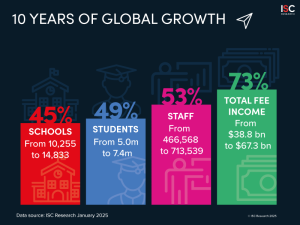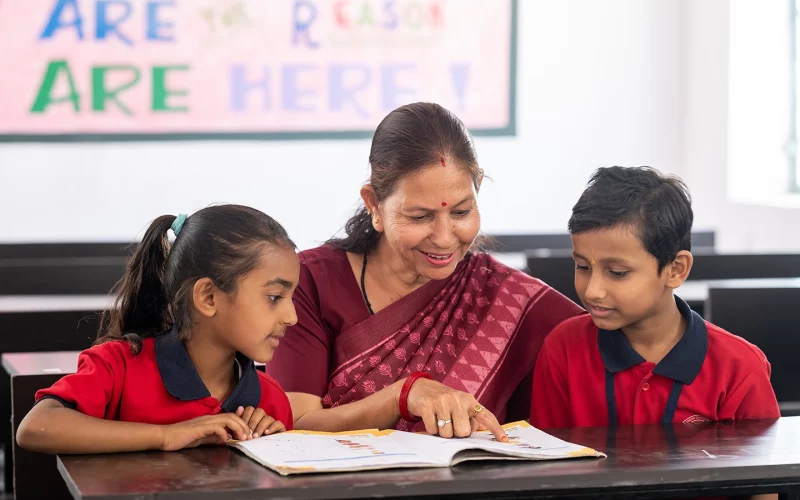Introduction
Education is one of the most powerful drivers of social and economic progress, and India is at the center of a major transformation in this sector. With its vast population, expanding middle class, and rising demand for quality learning, the India school market is experiencing unprecedented growth. From traditional classrooms to modern, tech-enabled environments, schools in India are reshaping how students learn and prepare for the future.
This blog explores the dynamics of the India school market, covering growth drivers, challenges, trends, and opportunities for stakeholders.
Overview of the India School Market
India is home to the world’s largest student population, making its school market one of the most significant globally. With millions of schools spread across urban and rural regions, the sector reflects both diversity and disparity.
On one end, elite private schools offer world-class facilities, while on the other, government schools work to bridge gaps in access and affordability. The market encompasses public schools, private institutions, international schools, and alternative models, all serving different socio-economic segments.
Rise of the India School Market
The school market in India has grown rapidly over the past few decades. With a large population of young people and increasing government support for education, the demand for quality schooling has risen. As more parents prioritize education, private schools have flourished alongside public schools. With growing urbanization and a middle class with more disposable income, the market for schools, educational services, and school-related products has expanded significantly. Technology has also played a role, with many schools adopting digital tools and e-learning platforms. Today, the India school market is one of the largest and fastest-growing in the world.
Current Size of the Indian School Market
India’s school education market covers three main segments: public schools, private schools, and international schools. Among these:
- Public Schools are run by state and central governments and educate most of the rural population.
- Private Schools make up a growing share, especially in urban areas, offering better infrastructure and teaching standards.
- International and Premium Schools serve upper-middle and high-income families, offering global curricula like IB and Cambridge.
In 2025, the Indian school market is valued at over USD 135 billion, with a projected annual growth rate of 8–10%. This growth is supported by rising demand for quality education, growing income levels, and a strong push towards digital transformation.
Benefits of the India School Market
The growth of the India school market brings many benefits to students, parents, and the country. For students, the rise in quality schools and educational tools means better learning opportunities. Parents benefit from more options, as they can choose schools that best meet their children’s needs. The education sector also creates jobs, from teachers to administrators, and boosts the economy. Additionally, a stronger focus on education leads to a more skilled workforce, which is essential for India’s future economic growth. The growing market also encourages innovation in teaching methods, technology, and school management.
Role of the India School Market in Society
The India school market plays a crucial role in shaping the future of the country. Education is the foundation of personal and societal development, and the school market provides the means for millions of children to access it. Schools prepare students for their careers, teaching them the skills they need to succeed in the workforce. They also promote values like teamwork, creativity, and problem-solving. The market supports both urban and rural development by offering education in various formats, from traditional schools to online learning. In a country with such a large and diverse population, the school market helps to bridge gaps in access and quality.
Key Drivers of Growth
Several factors are shaping the expansion of the India school market:
- Population Growth: With over 250 million school-age children, India has one of the highest demands for educational infrastructure.
- Rising Disposable Income: Middle-class families are increasingly willing to invest in quality education.
- Government Initiatives: Policies like the Right to Education (RTE) Act and the National Education Policy (NEP) 2020 are pushing reforms.
- Technology Integration: Smart classrooms, digital platforms, and e-learning tools are transforming the learning experience.
- Global Exposure: Parents are seeking international curricula such as IB and Cambridge, fueling growth of international schools.
Market Segmentation

1. By School Type
- Public Schools: Run by central and state governments, offering free or low-cost education.
- Private Schools: Known for better infrastructure, extracurricular activities, and English-medium instruction.
- International Schools: Growing in urban centers, offering global curricula for students aiming at international higher education.
- Alternative and Experimental Schools: Montessori, Waldorf, and other models catering to holistic education seekers.
2. By Curriculum
- State Boards: Serving the majority of students in local languages.
- Central Board of Secondary Education (CBSE): Popular nationwide, with standardized curriculum.
- Council for the Indian School Certificate Examinations (CISCE): Focused on English-medium, balanced academics, and activities.
- International Curricula: IB, Cambridge, and others gaining momentum.
Regional Insights
The India school market varies greatly by region:
- Northern India: Delhi, Haryana, and Punjab have a strong presence of private and international schools.
- Southern India: States like Karnataka, Tamil Nadu, and Kerala lead in technology-enabled education.
- Western India: Maharashtra and Gujarat show a mix of private and government-run schools.
- Eastern and Northeastern India: Growing focus on improving access and infrastructure in rural and semi-urban areas.
Emerging Trends in the India School Market
The school landscape in India is evolving with innovative practices and changing expectations:
- Digital Classrooms: Adoption of smart boards, e-learning tools, and virtual labs is rising.
- Hybrid Learning Models: A blend of physical and online learning is becoming mainstream.
- Focus on Holistic Development: Schools are emphasizing life skills, mental health, and extracurricular activities.
- STEM and Skill-Based Learning: Robotics, coding, and entrepreneurship programs are gaining traction.
- Sustainability in Schools: Green campuses and eco-friendly practices are increasingly valued by parents and institutions.
Opportunities and Challenges
Opportunities
- Expansion of international schools in tier-2 and tier-3 cities.
- Growing demand for affordable private schools.
- Investment opportunities in EdTech partnerships.
- Rising popularity of extracurricular and after-school programs.
Challenges
- Unequal access to quality education in rural vs. urban areas.
- Teacher shortages and training gaps.
- Rising costs of private education, creating affordability concerns.
- Regulatory and compliance issues in school operations.
Competitive Landscape
The India school market features a mix of established groups and emerging players. Prominent names include:
- Delhi Public School Society
- Kendriya Vidyalaya Sangathan
- Ryan International Group of Institutions
- DAV Public Schools
- Amity International Schools
- Podar Education Network
These institutions are expanding their footprint while adopting new technologies, global teaching methods, and student-centered approaches.
Future Outlook
The future of the India school market looks promising as education becomes central to India’s economic and social development goals. With NEP 2020 focusing on flexibility, skill development, and digital integration, schools are set to undergo massive transformation.
Private schools will continue to expand, international schools will gain stronger presence, and government initiatives will work to bridge rural-urban divides. Technology will remain a critical driver, ensuring more personalized, inclusive, and future-ready learning experiences.
FAQ: India School Market
Q1. How big is the India school market?
India has the largest school system in the world, with over 1.5 million schools catering to more than 250 million students.
Q2. What are the main types of schools in India?
The market includes government-run schools, private institutions, international schools, and alternative education models.
Q3. Which curriculum is most popular in India?
CBSE is the most widely followed curriculum, though state boards and CISCE also have significant presence. International curricula like IB and Cambridge are growing rapidly in urban areas.
Q4. How is technology changing the school market in India?
Digital classrooms, hybrid models, and e-learning platforms are making education more interactive, accessible, and scalable.












